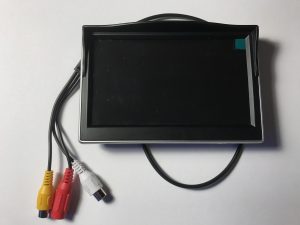After the encouraging results of my first attempt to fix the composite signal from a C64, so that the cheap TFT monitor could display it, I shared the idea on Forum64 to double-check and get some feedback. Consensus seems to be that the circuit at least won’t hurt the video source. Since, in addition to that, it seems to be working for me, I decided to design a board for it in KiCAD.
The goal was to make it so small that it would fit inside the display’s case alongside the display controller, so I went for all surface mount components. To get immediate results, I created a single sided layout and etched the board myself using the toner transfer method. Continue reading
















